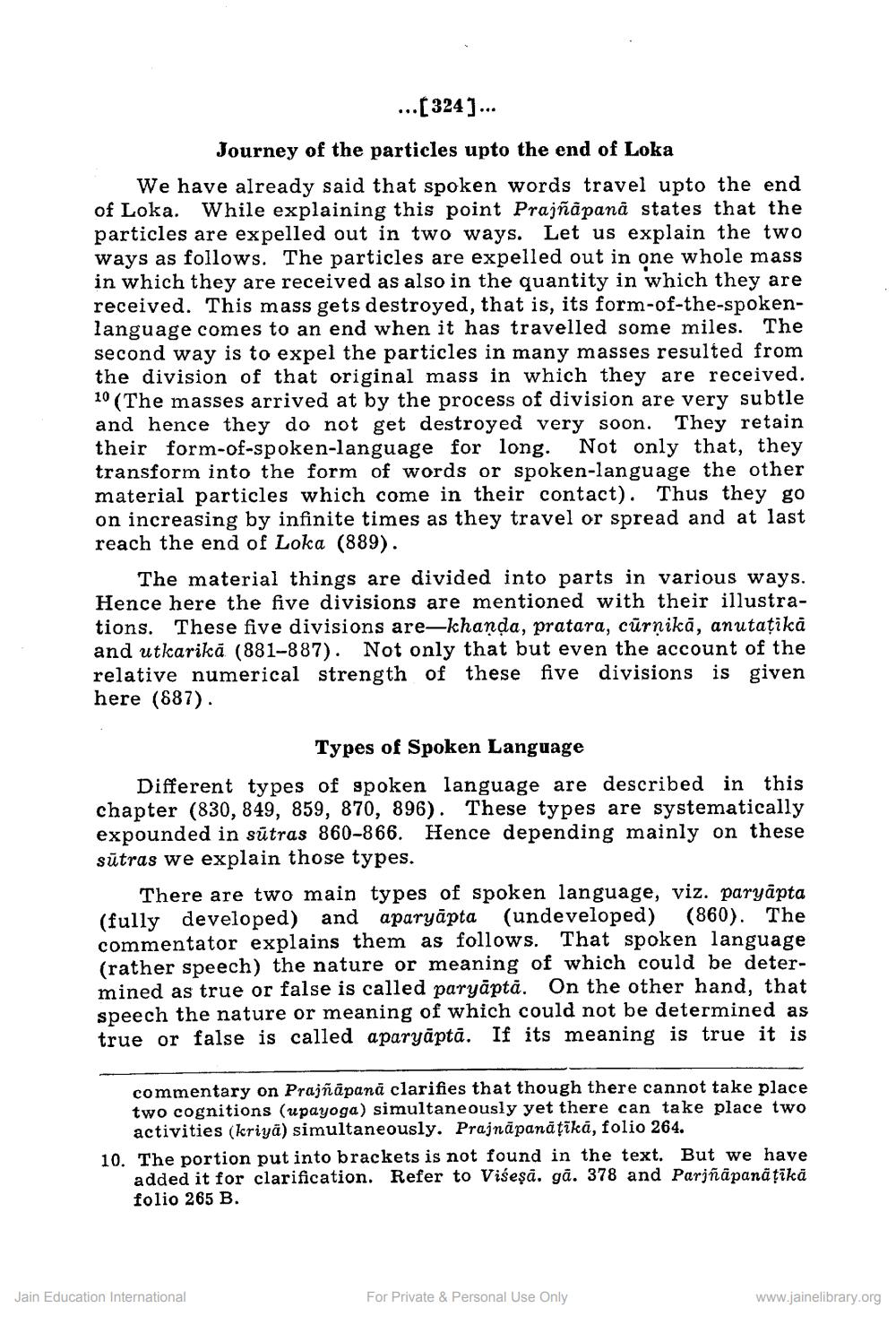________________
... [324]...
Journey of the particles upto the end of Loka We have already said that spoken words travel upto the end of Loka. While explaining this point Prajñāpanå states that the particles are expelled out in two ways. Let us explain the two ways as follows. The particles are expelled out in one whole mass in which they are received as also in the quantity in which they are received. This mass gets destroyed, that is, its form-of-the-spokenlanguage comes to an end when it has travelled some miles. The second way is to expel the particles in many masses resulted from the division of that original mass in which they are received. 10 (The masses arrived at by the process of division are very subtle and hence they do not get destroyed very soon. They retain their form-of-spoken-language for long. Not only that, they transform into the form of words or spoken-language the other material particles which come in their contact). Thus they go on increasing by infinite times as they travel or spread and at last reach the end of Loka (889).
The material things are divided into parts in various ways. Hence here the five divisions are mentioned with their illustrations. These five divisions are-khanda, pratara, cūrnikā, anutaţikā and utkarikā (881-887). Not only that but even the account of the relative numerical strength of these five divisions is given here (887).
Types of Spoken Language Different types of spoken language are described in this chapter (830, 849, 859, 870, 896). These types are systematically expounded in sūtras 860-866. Hence depending mainly on these sūtras we explain those types.
There are two main types of spoken language, viz. paryāpta (fully developed) and aparyāpta (undeveloped) (860). The commentator explains them as follows. That spoken language (rather speech) the nature or meaning of which could be determined as true or false is called paryāptā. On the other hand, that speech the nature or meaning of which could not be determined as true or false is called aparyāptā. If its meaning is true it is
commentary on Prajñāpanā clarifies that though there cannot take place two cognitions (upayoga) simultaneously yet there can take place two
activities (kriyä) simultaneously. Prajnäpanātikā, folio 264. 10. The portion put into brackets is not found in the text. But we have
added it for clarification. Refer to Viseşă. gā. 378 and Parjñāpanātikā folio 265 B.
Jain Education International
For Private & Personal Use Only
www.jainelibrary.org




